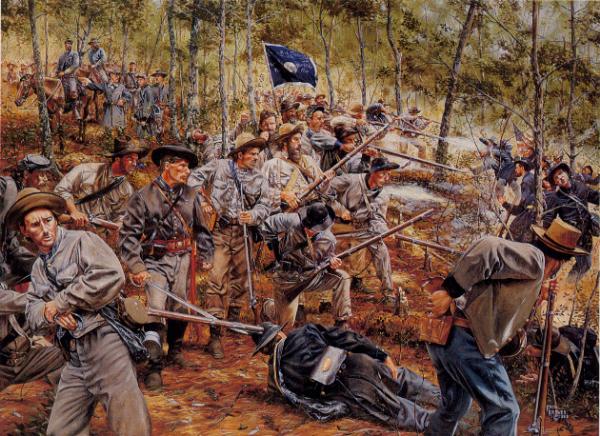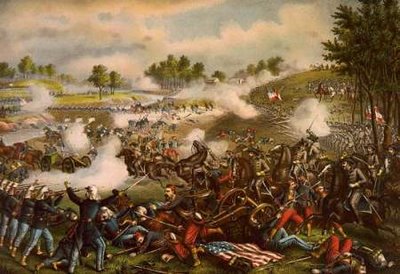AUGUST 29, 1862:
The
Second Battle of Bull Run (Second Manassas) (Day
Two):
General John Pope not only didn’t have a clear idea where Stonewall
Jackson was, he didn’t have a clear idea where his own troops were, and his
order to attack soon became a disordered and piecemeal melee, which only became
worse after General Longstreet linked up with General Jackson.
Pope somehow had
convinced himself that Jackson was retreating, and he issued an infamous “Joint
Order” directing that his scattered Divisions and Brigades converge on one
point on the battlefield simultaneously to envelop Jackson’s force (Pope was,
for some unknown reason, ignoring or not accounting for Longstreet).
In the fog
of war, communications miscarried, responses were lost, and any attempts at
coordination failed. The Union attack never materialized.
At noon, Jackson’s
wing launched a massive artillery barrage, and Longstreet’s wing crashed into
Pope’s flank, which, barely organized, disintegrated.
Just as at First Bull
Run, the troops began streaming back toward Washington, and only a resolute rearguard
action prevented the Confederates from marching on the District of Columbia.
Union casualties were about 10,000 killed and wounded out of 62,000 engaged;
the Confederates lost about 1,300 killed and 7,000 wounded out of 50,000.






